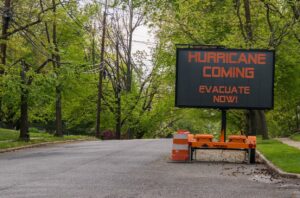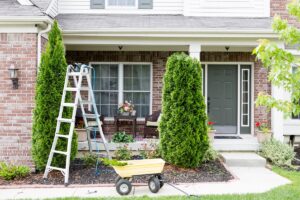In the unfortunate event of a home fire, you may have less than two minutes to escape your home safely from the time your smoke alarm sounds. Are you prepared?
While vipHome.app wants to help you prevent a home fire from happening in the first place, you need to be prepared for the worst-case scenario. That’s why we reached out to the National Fire Prevention Association (NFPA)! We spoke with Susan McKelvey, Communications Manager for NFPA, to learn the fire safety tips you need to know to best protect your family and home from a home fire.
Understanding the danger
“People tend to be overconfident when it comes to home fires,” says Susan, who has worked for the NFPA for more than eight years. “While the number of home fires has generally declined over the past 20 years or so, they can and do still happen.”
The vast majority of fires are preventable, but there’s much more work to do to reduce the risk of death and injury.
“Because of that overconfidence, people don’t always consider home fires something they should be concerned about, but in reality, it continues to be a risk,” says Susan.
While there is no way to completely eliminate the risk of a home fire, there are two basic but essential steps you can take to protect your household from fire.
“Make sure you have working smoke alarms everywhere you need them and create an escape plan,” says Susan, “so that when the smoke alarm sounds, you and your family can use that time as wisely and effectively as possible.”
Here’s how to do just that.
#1 – Install and maintain smoke detectors
“Most homes have at least one smoke alarm, but they’re not always maintained or working properly,” says Susan.
NFPA data shows that almost three of every five home fire deaths resulted from fires in homes with no smoke alarms (41%) or no working smoke alarms (16%). Many homes have smoke alarms that aren’t working properly, either because of dead or missing batteries. That’s why it’s imperative for homeowners to check their smoke alarms monthly to make sure they are working properly.
NFPA suggests completing these steps to install and maintain your smoke detectors:
- Install at least one alarm on every level of your home, near all sleeping areas, and inside each bedroom.
- Install interconnected smoke alarms, so when one sounds, they all sound.
- Use combination alarms, which detect smoldering and flaming fires.
- Test your smoke alarms once a month to make sure they are working properly.
- Change the batteries when the alarms indicate.
- Replace smoke alarms every 10 years or sooner if the chirping doesn’t stop when you change the batteries. (“Many homeowners don’t realize that smoke alarms are not designed to work forever,” says Susan.)
Not sure how old your smoke alarms are? Check the date of manufacture on the back of the alarm. Your alarm needs to be replaced 10 years from that date.
#2 – Get out, stay out
Explains Susan, “Today’s home fires burn faster than ever, and you have such a small window of time to escape safely in a typical home fire. You may have as little as two minutes to get out safely from the time the smoke alarms sound.”
Not sure how to make a fire escape plan?
Susan suggests completing these essential steps to create an effective escape plan for your household:
- Draw a grid of your home with all the rooms.
- Identify two exits from each room (typically a door or a window).
- Make sure exits are not blocked (by furniture or clutter) and are in working order.
- Determine a path from each room’s exits to the outside.
- Select a meeting place outside the home, generally in front, where everyone knows to gather.
- Practice the plan (and different escape scenarios) with your household regularly, at least twice a year.
That last step is crucial and should not be overlooked.
Practice promotes safety

“Practicing your plan creates muscle memory around what to do when the smoke alarm sounds,” says Susan. “As simple as it sounds, ensuring that everyone has actually practiced the steps they’d take in a fire situation can have a potentially life-saving impact. Everyone will be able to snap into action, know exactly what to do, and use the precious little time they have to get out quickly and safely.”
Equally important is practicing different scenarios, so your family will know how to escape a home fire if certain exits are blocked.
If possible, grab a cellphone on the way out or include going to a neighbor’s home as part of your plan, so you can call 911 as quickly as possible.
But NFPA stresses, “Get out, stay out.”
The next wave of fire safety – sprinklers
NFPA sees sprinklers as the next step in fire safety evolution as the home fire death rate has remained steady over the last few decades.
“What we’re seeing is that when people have fires in their homes, they’re still having trouble escaping safely,” says Susan. “Sprinklers dramatically reduce the likelihood of your risk to fire in terms of fatalities, but also injuries and property damage. They’re safer for firefighters, too.”
An arm of the NFPA is the “Fire Sprinkler Institute,” which works to require sprinklers in new home constructions. As for the homeowners who fear seeing sprinklers in their homes, Susan assures that’s not a problem.
“If you look at the way modern sprinklers are designed, it’s just like a little tap flush with your ceiling, so you really can’t see them. They’re very tastefully done.”
Awareness saves lives
The best life-saving measure when dealing with home fires is taking preventative steps and precautions.
Notes Susan, “In a real fire situation, it’s scary. It’s hot. There’s smoke. You need to be prepared in advance to ensure that everyone in your home knows how to protect themselves.”
That is why having a home fire escape plan and correct smoke alarm placement is so critically important.
“Having an awareness of the ways you can reduce your risk of home fire and protect yourself, your family members, and your home can really make such a tremendous difference.”
Prevent the preventable in your home
Homeownership can be hard, but it doesn’t have to be. The vipHome.app can help. In less than four minutes, enjoy a new way to manage your home. Simply download the app, register your home, and enjoy a simplified homeownership experience.





